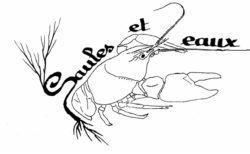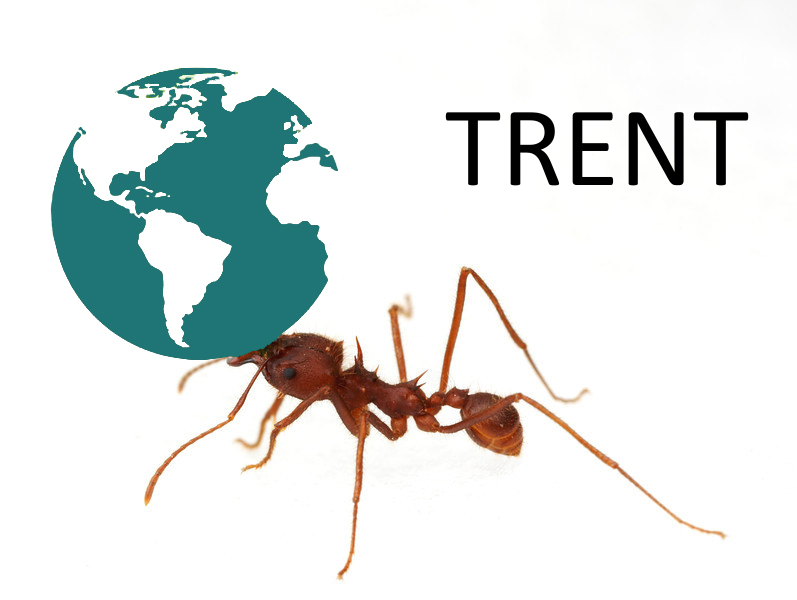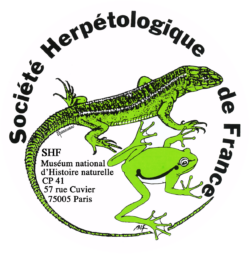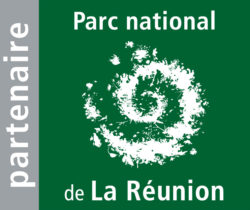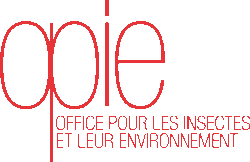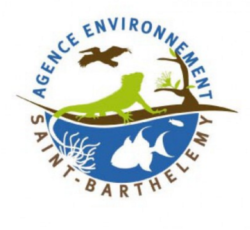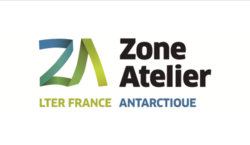Références bibliographiques relatives aux évaluations des risques et les méthodes de hiérarchisation
Pour rechercher un mot clé dans la page, taper le mot dans l’outil « rechercher » de votre navigateur.
Pour télécharger le document cliquez sur le rond bleu.
Baker, R., & al. 2008. The UK risk assessment scheme for all non-native species, in Rabitsch, W., F. Essl & F. Klingenstein (Eds.): Biological Invasions – from Ecology to Conservation. NEOBIOTA 7 (2008): 46-57.![]()
Benke, K. K., & al. 2010. Risk assessment models for invasive species: uncertainty in rankings from multi-criteria analysis. Biological Invasions 13(1): 239-253.![]()
Bomford, M. 2003. RISK : assessment for the import and keeping of exotic vertebrates in Australia. Bureau of Rural Sciences, Canberra, Australia 135 pp.![]()
Booy, O., & al. 2017. Risk management to prioritise the eradication of new and emerging invasive non-native species. Biological Invasions 19(8): 2401-2417.![]()
Branquart, E., & al. 2016. A prioritization process for invasive alien plant species incorporating the requirements of EU Regulation no. 1143/2014. EPPO Bulletin 46(3): 603-617.![]()
Caley, P., & al. 2006. Quantifying Uncertainty in Predictions of Invasiveness. Biological Invasions 8(2): 277-286.![]()
Carboneras, C., & al. 2017. A prioritised list of invasive alien species to assist the effective implementation of EU legislation. Journal of Applied Ecology: 1-9.![]()
Chan, F. T., & al. 2012. Relative risk assessment for ballast-mediated invasions at Canadian Arctic ports. Biological Invasions 15(2): 295-308.![]()
Copp, G.H., & al. 2005. Risk identification and assessment of non-native freshwater fishes: concepts and perspectives on protocols for the UK. Science Series Technical Report, Cefas Lowestoft, 129, 32 pp.![]()
Cottaz, C. 2016. Fiches de synthèse des EEE évaluées pour la région Provence-Alpes-Côte d’Azur. ONCFS. 70 p.![]()
David, M., & al. 2013. Risk assessment for exemptions from ballast water management – The Baltic Sea case study. Marine Pollution Bulletin 75(1–2): 205-217.![]()
Davidons A.D. & al. 2017. Development of a risk assessment framework to predict invasive species establishment for multiple taxonomic groups and vectors of introduction. Management of Biological Invasions, 8(1): 25-36.![]()
Diez, J. M., & al. 2011. Using prior information to build probabilistic invasive species risk assessments. Biological Invasions 14(3): 681-691.![]()
Dufour, B., Plée, L., Moutou F., Boisseleau, D., Chartier, C., Durand, B., Ganière, J.P., Guillotin, J., Lancelot, R., Saegerman, C., Thébault, A., Hattenberger, A. M. & Toma, B. 2011. A qualitative risk assessment methodology for scientific expert panels. Rev Sci Tech 30(3): 673-681.![]()
Edney-Browne, E., & al. 2018. Establishment patterns of non-native insects in New Zealand. Biological Invasions 20(7): 1657-1669.![]()
EPPO. 2012. EPPO Standards – Guidelines for pest risk analysis. PM5/6(1) EPPO prioritization process for invasive alien plants. Bulletin OEPP/EPPO, 42 (3), 463-474.![]()
EPPO. 2012. Decision-support scheme for an Express Pest Risk Analysis. Bulletin OEPP/EPPO 42 : 457-462. ![]()
Essl, F., & al. 2011. Review of risk assessment systems of IAS in Europe and introducing the German–Austrian Black List Information System (GABLIS). Journal for Nature Conservation 19(6): 339-350.![]()
Gallardo, B., & al. 2016. Trans-national horizon scanning for invasive non-native species: a case study in western Europe. Biological Invasions 18(1): 17-30.![]()
Gray, D. R. 2017. Risk analysis of the invasion pathway of the Asian gypsy moth: a known forest invader. Biological Invasions 19(11): 3259-3272.![]()
Halford, M., & al. 2014. The voluntary Code of conduct on invasive alien plants in Belgium: results and lessons learned from the AlterIAS LIFE+ project. EPPO Bulletin 44(2): 212-222.![]()
Hardin, S.& J. E. Hill. 2012. Risk Analysis of Barramundi Perch Lates calcarifer Aquaculture in Florida. North American Journal of Fisheries Management 32(3): 577-585.![]()
Heikkilä, J., & al. 2016. FinnPRIO: a model for ranking invasive plant pests based on risk. Biological Invasions 18(7): 1827-1842.![]()
Hurel, P. 2011. Les espèces Exotiques Envahissantes Animales du Nord-Est de la France Inventaire, évaluation, hiérarchisation et plan d’actions Application du plan d’actions sur les espèces Castor canadien (Castor canadensis) et Ouette d’Egypte (Alopochen aegyptiaca), Université Paul Verlaine: 1-124.![]()
ISEIA. 2009. Guidelines for environmental impact assessment and list classification of non-native organisms in Belgium. Harmonia information system, version 2.6. 4 pp![]()
Kumschick, S. & Richardson, D. M. 2013. Species-based risk assessments for biological invasions: advances and challenges. Diversity and Distributions 19(9): 1095-1105.![]()
Kumschick, S., & al. 2017. Impact assessment with different scoring tools: How well do alien amphibian assessments match? NeoBiota 33: 53-66.![]()
Lazzaro, L., & al. 2016. Priority invasive alien plants in the Tuscan Archipelago (Italy): comparing the EPPO prioritization scheme with the Australian WRA. Biological Invasions 18(5): 1317-1333.![]()
Leung, B., & al. 2013. Addressing a critique of the TEASI framework for invasive species risk assessment. Ecology letters 16(11): 1415-e1416.![]()
MacIsaac, H. J., & al. 2001. Reassessment of Species Invasions Concepts: The Great Lakes Basin as a Model. Biological Invasions 3(4): 405-416.![]()
Matthews, J., & al. 2017. Inconsistencies in the risk classification of alien species and implications for risk assessment in the European Union. Ecosphere 8(6): e01832-n/a.![]()
Mendoza, R., & al. 2015. Risk assessment of the ornamental fish trade in Mexico: analysis of freshwater species and effectiveness of the FISK (Fish Invasiveness Screening Kit). Biological Invasions 17(12): 3491-3502.![]()
McClure, M. L., &al. 2018. A globally-distributed alien invasive species poses risks to United States imperiled species. Scientific Reports 8(1): 5331.![]()
McGeoch, M. A., & al. 2016. Prioritizing species, pathways, and sites to achieve conservation targets for biological invasion. Biological Invasions 18(2): 299-314.![]()
McGregor, K. F., & al. 2011. How robust is the Australian Weed Risk Assessment protocol? A test using pine invasions in the Northern and Southern hemispheres. Biological Invasions 14(5): 987-998.![]()
Nentwig, W., & al. 2018. More than “100 worst” alien species in Europe. Biological Invasions 20(6): 1611-1621.![]()
Nentwig, W., & al. 2016. The generic impact scoring system (GISS): a standardized tool to quantify the impacts of alien species. Environmental Monitoring and Assessment 188(5): 315.![]()
Nishida, T., & al. 2008. Developing a pre-entry weed risk assessment system for use in Japan. Biological Invasions 11(6): 1319-1333.![]()
Peeler, E.J., Reese, R. A. & Thrush, M. A. 2015. Animal Disease Import Risk Analysis – a Review of Current Methods and Practice. Transboundary and Emerging Diseases 62(5): 480-490.![]()
Phillips, C. B., & al. 2018. Utility of the CLIMEX ‘match climates regional’ algorithm for pest risk analysis: an evaluation with non-native ants in New Zealand. Biological Invasions 20(3): 777-791.![]()
Pluess, T., & al. 2012. When are eradication campaigns successful? A test of common assumptions. Biological Invasions 14(7): 1365-1378.![]()
Questel, K. 2018. Proposition d’une méthodologie de classement des espèces indigènes et des espèces exotiques en vue de prioriser les actions de conservation ou leur gestion. Le Bulletin de l’ATE 2 : 2-32.![]()
Rignault, O. & Chevallier. D. Guide pour l’évaluation des risques d’introduction d’espèces non indigènes par les eaux de ballast. Ministère de l’Écologie, du Développement durable et de l’Énergie, 81p.![]()
Roy, HE., Bacher, S., Essl, F. & al. 2018. Developing a list of invasive alien species likely to threaten biodiversity and ecosystems in the European Union. Glob Change Biol. 00:1–18.![]()
Roy, H. Rabitsch,W., Scalera, R., Stewart, A & al. 2017. Developing a framework of minimum standards for the risk assessment of alien species. Journal of Applied Ecology. ISSN 0021-8901![]()
Roy, H. E., & al. 2014. Horizon scanning for invasive alien species with the potential to threaten biodiversity in Great Britain. Global Change Biology 20(12): 3859-3871.![]()
Speek, T. A. A., & al. 2012. Testing the Australian Weed Risk Assessment with different estimates for invasiveness. Biological Invasions 15(6): 1319-1330.![]()
Thévenot, J. 2014. Liste de référence des espèces de vertébrés introduits en France métropolitaine élaborée dans le cadre de la méthodologie de hiérarchisation des espèces invasives. Rapport d’étape n°1. Museum national d’Histoire naturelle, Service du Patrimoine naturel. Paris. 25 p.![]()
Triolo J. 2006. Quelles sont les plantes exotiques prioritaires en matière de lutte dans la Réserve naturelle de Mare Longue. Comparaison de deux méthodes de hiérarchisation et commentaires des résultats obtenus. 6p
Turbé, A., & al. 2017. Assessing the assessments: evaluation of four impact assessment protocols for invasive alien species. Diversity and Distributions 23(3): 297-307.![]()
Vanderhoeven, S., & al. 2017. Tracking Invasive Alien Species (TrIAS): Building a data-driven framework to inform policy. Research Ideas and Outcomes 3: e13414.![]()
Vanderhoeven, S., & al. 2017. Beyond protocols: improving the reliability of expert-based risk analysis underpinning invasive species policies. Biological Invasions 19(9): 2507-2517.![]()
Varray. S. (Coords). 2017. Liste hiérarchisée des espèces exotiques envahissantes du Bassin Loire-Bretagne – version avril 2017. Fédération des Conservatoires d’espaces naturels, 18 p.![]()
Velde, G., & al. 2009. Aquatic invaders: from success factors to ecological risk assessment: introduction. Biological Invasions 11(9): 1987-1988.![]()
Weber, E., & Gut, D. 2004. Assessing the risk of potentially invasive plant species in central Europe. Journal for Nature Conservation, 12, 171-179.![]()
Zepeda Sein, C. 2002. L’analyse de risque : un outil d’aide à la décision pour la prophylaxie et la prévention des maladies animales. Conférence OIE, 251-257.![]()






























